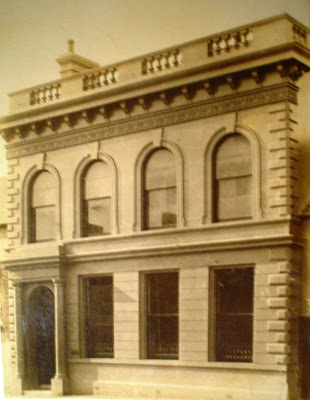The Great War is one event that affected the lives of many bank officials from all the banks in Ireland. In 1914, our bank was actually two banking institutions; the Belfast Banking Company Limited and the Northern Banking Company Limited. The Northern had branches all over Ireland whilst the Belfast had branches in the north of Ireland and Dublin.
War was declared in August 1914 and from then on, many young men of each bank together with some who were considerably older volunteered for active service. It must be recognised that all were volunteers apart from one Northern messenger who was already an army reservist. Altogether, nearly 200 men left their banking roles and went off to war. Before the war was over, 33 men were either killed in action, reported missing or had died on active service. Many were wounded in action, some being injured 2 or 3 times.
Following the armistice in 1918, the remaining men were repatriated back to Ireland and back into banking life. Some decided on careers away from banking.
Memorials to the men who died or were reported missing were made. With those memorials, Rolls of Honour were drafted recording the names of the men who served during the war. These memorials were paper based and incorporated photographs of each official.
At the onset of the Second World War in 1939 and for the period to 1945, nearly 100 officials from both banks again volunteered for active service. 13 of these men were either killed in action or were reported missing.
Following the end of the war, each bank drafted and created memorials / rolls of honour and cast them in bronze. They contained the names of the officials from each conflict in the style of surname and initials.
These memorials were installed in each Head Office; Waring Street (Belfast Banking Company) and Victoria Street (Northern Banking Company). In due course, following the closure of each building, they were installed in their current location, outside the ‘Vault’ staff restaurant in the basement of Donegall Square West, Belfast.
In 2010, I decided that the time was right to try and identify all those officials named on the memorials. I wanted to take away the anonymity that just a surname with initials gives. Each name represents a former colleague and someone who also had family and descendants. Some of those descendants may also have worked in the bank.
In all, I researched and have now posted over 300 mini-biographies with associated articles, and whilst my initial idea had been to publish a book, it quickly became obvious that fresh details for each man can come to light very quickly and for the ease of updating, I decided on an external website. Each mini-biography may contain information from a variety of public sources e.g.
- National Archives of Ireland – 1901 & 1911 Irish Census, Soldiers’ Wills
- The National Archives – Medal Index Cards
- Public Records Office for Northern Ireland – Ulster Covenant
- Commonwealth War Graves Commission
- London Gazette
- Belfast Newspaper Library – cuttings from the Belfast News Letter (courtesy of Nigel Henderson)
- The Link – staff magazine of Northern Bank
- Ancestry.com
- General Records Office for NI (GRONI)
The website address is: http://northernbankwarmemorials.blogspot.co.uk/ or just Google ‘Northern Bank War Memorials’. It has been running since November 2012 and has followers throughout the world. It is most pleasing when a descendant of one of the men contacts me and gives more information or photographs.
Please feel free to circulate this address to former colleagues.
Gavin Bamford
April 2013 - updated 2022
Gavin Bamford
April 2013 - updated 2022





.jpg)




























